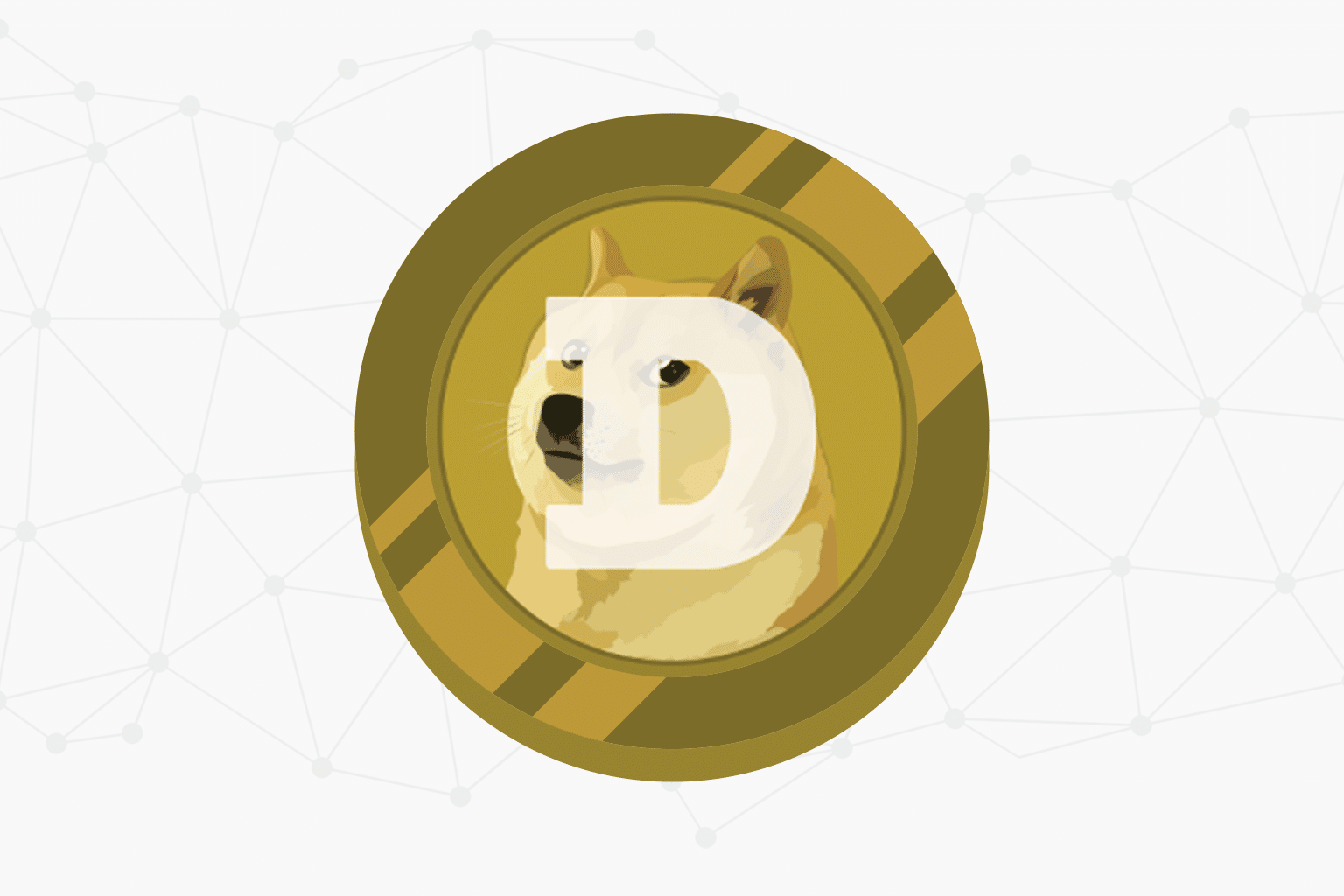Dogecoin started as a joke in 2013, based on the popular “Doge” meme featuring a Shiba Inu dog. What began as a lighthearted cryptocurrency has grown into a digital asset with a market value that has occasionally reached billions of dollars. Dogecoin (DOGE) is considered the first meme coin ever launched and has created its own category within the cryptocurrency market.
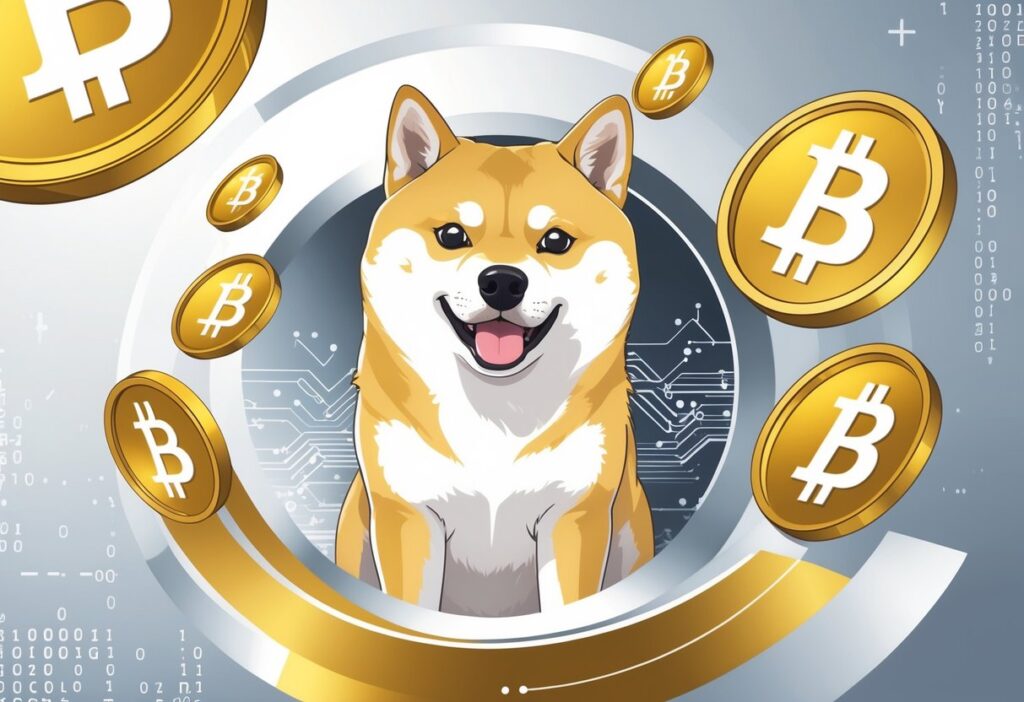
Unlike Bitcoin which has a limited supply, Dogecoin has an unlimited supply with billions of coins already in circulation. This hasn’t stopped it from gaining tremendous popularity, especially when endorsed by celebrities and discussed on social media. The Dogecoin community plays a crucial role in its persistence and value, setting it apart from other cryptocurrencies that focus more on technical utility.
Key Takeaways
- Dogecoin began as a joke cryptocurrency based on a meme but evolved into a valuable digital asset with significant market presence.
- Unlike Bitcoin, Dogecoin has no maximum supply cap which affects its long-term value proposition.
- The strong community support and social media presence have been crucial factors in Dogecoin’s continued relevance in the cryptocurrency market.
Overview of DOGECOIN
Dogecoin is a digital currency that was created in 2013 as a playful alternative to other cryptocurrencies. It’s based on the popular “Doge” internet meme featuring a Shiba Inu dog. What started as a joke has evolved into a well-known cryptocurrency.
As a meme coin, Dogecoin has a lighter approach than Bitcoin or Ethereum. I’ve observed that despite its humorous origins, it functions as a legitimate peer-to-peer digital currency for transactions.
Dogecoin experienced significant price fluctuations, particularly in 2021 when it rose in popularity after a long dormancy. The cryptocurrency gained attention from both retail investors and high-profile figures on social media.
Key Features of Dogecoin:
- Created: December 2013
- Symbol: DOGE
- Type: Altcoin/Memecoin
- Based on: Litecoin (modified)
- Supply: Unlimited (no cap)
- Mining: Proof of Work
Unlike Bitcoin, Dogecoin has no maximum supply limit. I find this interesting because it means new coins are continuously minted, making it inflationary by design.
Dogecoin transactions are typically faster and cheaper than Bitcoin. This makes it potentially useful for small transactions and tipping online.
The community surrounding Dogecoin is known for charity work and friendly culture. I believe this community aspect contributes significantly to its continued relevance in the cryptocurrency market.
Want more analysis? Read our DOGE Price Analysis
History & Evolution
Dogecoin began as a joke in late 2013, created by software engineers Billy Markus and Jackson Palmer. I find it fascinating that they never expected it to be taken seriously.
The cryptocurrency was named after the popular “Doge” meme featuring a Shiba Inu dog with comic sans text expressing simple thoughts. This playful origin set Dogecoin apart from other cryptocurrencies of that time.
Billy Markus handled the technical implementation while Jackson Palmer created the brand. They based Dogecoin on Litecoin’s code, making it faster than Bitcoin with lower transaction fees.
Unlike Bitcoin’s limited supply, Dogecoin was designed with an infinite supply, creating built-in inflation. Initially, there was a cap of 100 billion coins, but this limit was later removed.
The Dogecoin community quickly became known for charitable giving. They funded the Jamaican bobsled team’s trip to the 2014 Winter Olympics and sponsored a NASCAR driver.
By 2021, Dogecoin had transformed from a lighthearted concept to a cryptocurrency worth billions. Celebrity endorsements, particularly from Elon Musk, helped fuel its remarkable rise.
Dogecoin’s evolution represents an interesting case study in how internet culture can create real-world value. What started as a joke based on a Shiba Inu meme became one of the most recognized cryptocurrencies in the world.
Composition & Sector Weights
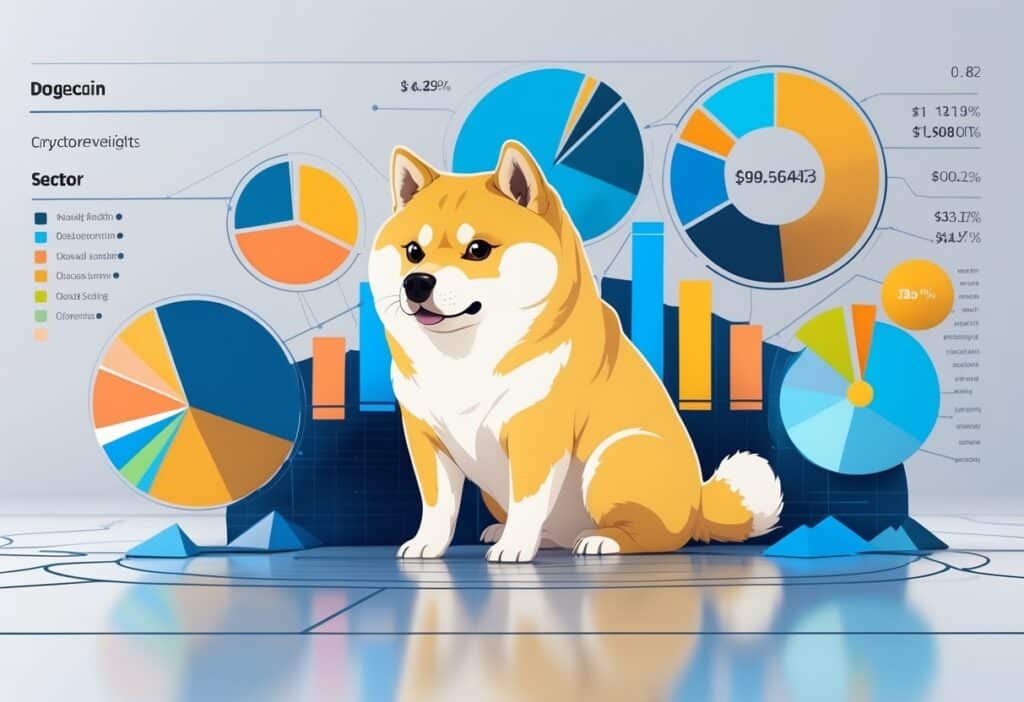
Dogecoin stands out from many cryptocurrencies due to its inflationary nature. Unlike Bitcoin which has a capped supply, Dogecoin has an unlimited supply with new coins continuously entering circulation.
When I analyze Dogecoin’s market positioning, I notice it holds a unique place in the crypto sector. While not as dominant as Bitcoin or Ethereum, Dogecoin maintains significant market capitalization that fluctuates based on investor sentiment and market conditions.
The coin’s price volatility is notably high, even by cryptocurrency standards. Research suggests that Dogecoin exhibits distinct volatility patterns throughout the week, with Monday’s volatility often differing from other days.
In portfolio composition, Dogecoin can serve as a diversification tool. Some investors allocate a small percentage to DOGE alongside more established cryptocurrencies. One study found portfolios with 25% weight in DOGE showed interesting risk-return characteristics.
Regarding transaction functionality, Dogecoin offers faster transaction speeds compared to Bitcoin:
| Cryptocurrency | Block Time |
|---|---|
| Bitcoin | 10 minutes |
| Litecoin (LTC) | 2.5 minutes |
| Dogecoin | 1 minute |
This faster confirmation time makes Dogecoin potentially more practical for everyday transactions. Combined with its relatively low transaction fees, Dogecoin maintains advantages for smaller payments compared to higher-cap alternatives.
Trading volume for Dogecoin can spike dramatically during market events, contributing to its occasional dramatic price movements and changing market value.
Looking for DOGE Live prices? view our DOGEUSD live price feed.
Calculation Methodology
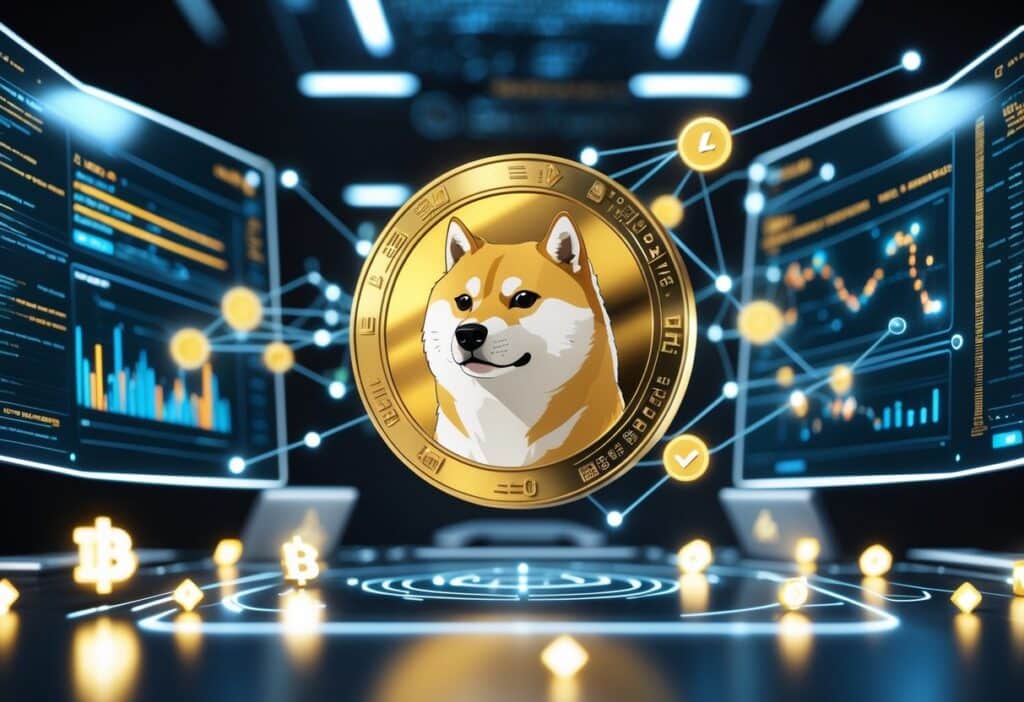
When looking at Dogecoin, I need to understand how it’s valued and processed. The calculation of Dogecoin relies on blockchain technology that tracks all transactions in a decentralized network.
Dogecoin uses a proof-of-work system where miners solve complex mathematical problems to validate transactions. Unlike Bitcoin, Dogecoin specifically uses the scrypt algorithm, which is less resource-intensive.
Returns are typically calculated as “the natural logarithmic price differences” which can be expressed as:
rt = log(Pt/Pt-1)
Where Pt represents the current price and Pt-1 is the previous price.
Mining pools combine computing power to increase chances of earning block rewards. The mining process involves:
- Verifying transactions on the network
- Bundling transactions into blocks
- Solving cryptographic puzzles
- Adding validated blocks to the blockchain
Private keys are essential for secure ownership and transactions. I must safeguard these keys as they provide access to my Dogecoin holdings.
When analyzing Dogecoin performance, I look at transaction value relative to market cap. Research shows the conditional information entropy of Dogecoin transaction value given market cap is 0.047.
For price prediction, models typically reserve about 15% of observations for testing accuracy. This methodology helps evaluate how well predictive algorithms might perform with future Dogecoin prices.
Significance & Common Uses
Dogecoin has grown from a joke cryptocurrency to having real-world impact. I’ve seen it develop a strong following due to its accessibility and community-driven nature.
The Dogecoin community is known for its generosity and fun approach to cryptocurrency. Many users first experience crypto through Dogecoin because of its low entry barrier.
One of the most popular uses of Dogecoin is tipping on social media platforms. Users reward content creators with small amounts of DOGE for valuable posts or comments, especially on Reddit.
Charitable initiatives represent another significant use. The Dogecoin community has funded water projects, sponsored Olympic athletes, and supported various nonprofit organizations through coordinated donations.
Some businesses now accept Dogecoin as a payment method. The Dallas Mavericks basketball team accepts Dogecoin for tickets and merchandise, giving it mainstream credibility.
The peer-to-peer nature of Dogecoin makes it useful for quick, low-cost transactions. This efficiency has helped it maintain relevance in the cryptocurrency ecosystem.
The Dogecoin Foundation provides structure and guidance for development while preserving the coin’s community spirit. They help coordinate improvements to the network.
Social media has been crucial to Dogecoin’s growth. Price movements often correlate with Twitter activity, showing the power of community enthusiasm.
I’ve observed that beyond financial value, Dogecoin’s cultural significance comes from its welcoming community and lighthearted approach to cryptocurrency.
How to Invest (No Advice)
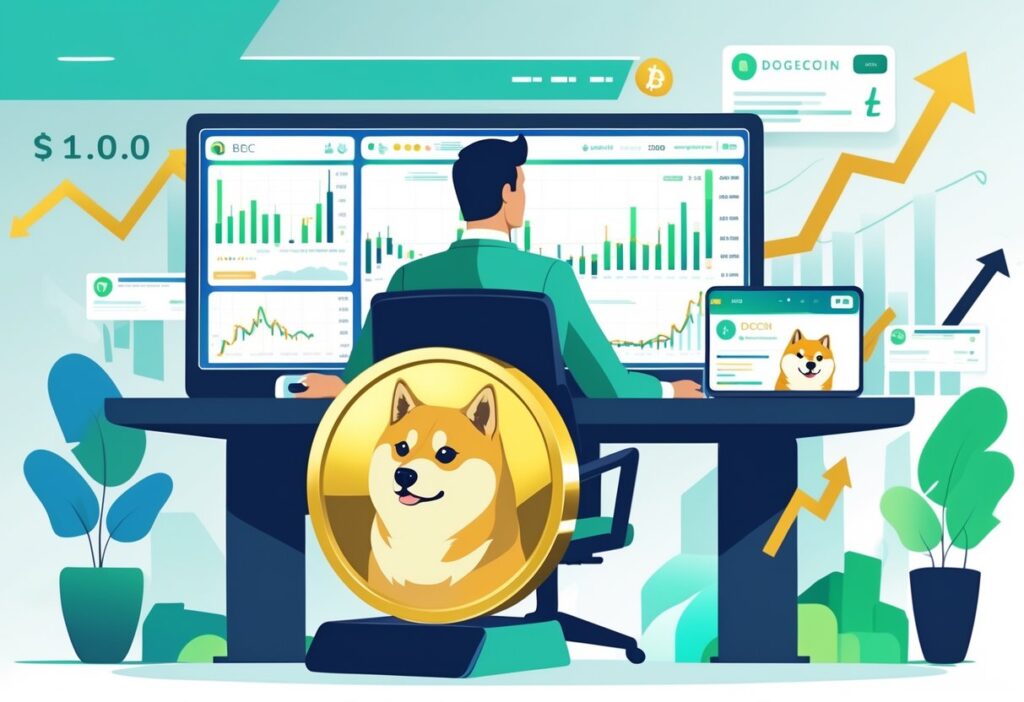
If you’re interested in adding Dogecoin to your portfolio, I want to share some basic ways to get started. Remember, this isn’t financial advice – just information about the process.
Popular exchanges that allow you to buy Dogecoin include Coinbase, Binance, and Kraken. Each has different fees and verification requirements.
You’ll need to:
- Create an account
- Verify your identity
- Add payment method
- Purchase Dogecoin
For security, I recommend using a crypto wallet rather than keeping your investment on an exchange. Hardware wallets offer the best protection for long-term holdings.
The investment fundamentals of Dogecoin differ from traditional assets. It’s important to understand its volatility before investing.
Keep in mind that cryptocurrencies can experience dramatic price swings. I’ve seen Dogecoin rise or fall by double-digit percentages in a single day.
Many investors use dollar-cost averaging – buying small amounts regularly rather than one large purchase. This can help manage the risk of volatility.
Before investing, I suggest researching Dogecoin’s technology, community, and adoption. The Dogecoin community is active online and can provide valuable insights for newcomers.
How Often Is the Ticker Reviewed?
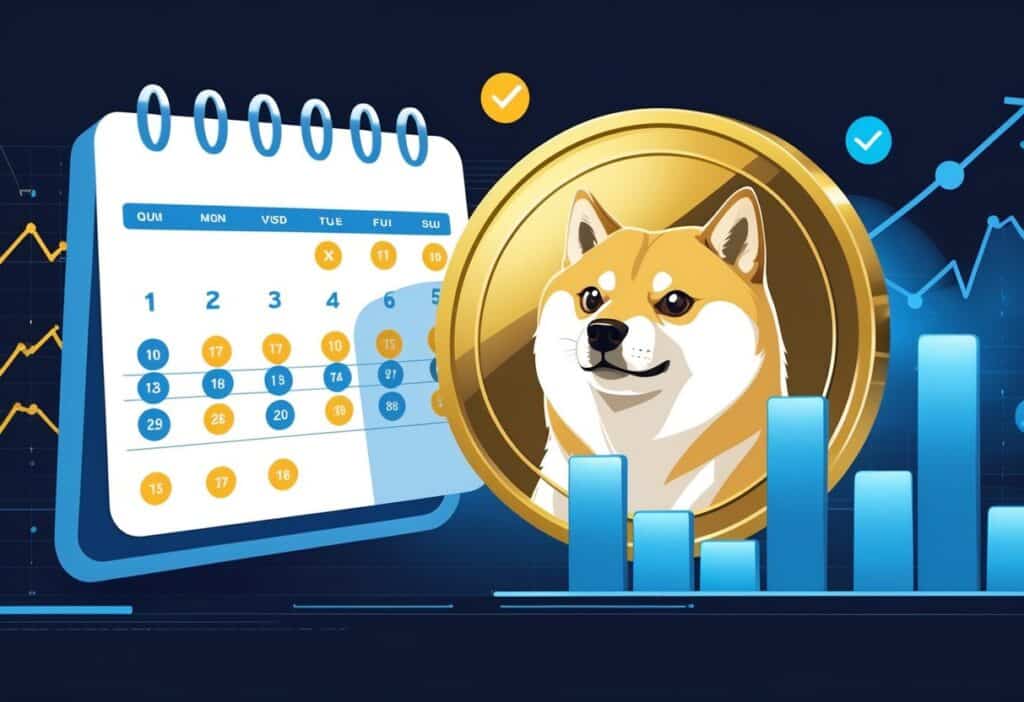
Dogecoin doesn’t have a traditional index like stock markets, but its market performance is constantly monitored. I can tell you that cryptocurrency tracking platforms update Dogecoin prices in real-time, 24 hours a day.
Major cryptocurrency exchanges review Dogecoin trading data continuously. This allows for immediate price adjustments based on buying and selling activity across global markets.
Dogecoin price volatility is tracked moment by moment, showing how it compares to traditional currencies and stock indices. This constant review helps traders make informed decisions.
Analytics platforms typically provide daily, weekly, and monthly reviews of Dogecoin performance. These regular assessments help identify trends and patterns in trading behavior.
Social media impact on Dogecoin is also frequently analyzed. Researchers have found interesting associations between tweets and Dogecoin economic indicators, showing how community engagement affects prices.
Some platforms use AI to predict Dogecoin price movements based on market data and social media trends. These predictive models are typically reviewed and updated regularly to maintain accuracy.
While not an index in the traditional sense, Dogecoin’s market position is constantly monitored and thoroughly analyzed by various financial platforms and research institutions.
What’s the Difference Between DOGECOIN and Close Peers?
When I look at Dogecoin compared to its peers like Bitcoin, Litecoin, and others, several key differences stand out.
Dogecoin began as a meme currency featuring the Shiba Inu dog, while Bitcoin was created as a serious alternative to traditional banking. This origin story shapes how people view and use these cryptocurrencies today.
Technical Differences:
- Mining Algorithm: Dogecoin uses Scrypt technology (like Litecoin), which is different from Bitcoin’s SHA-256
- Supply Cap: Bitcoin has a 21 million coin limit, while Dogecoin has no maximum supply
- Transaction Speed: Dogecoin transactions typically process faster than Bitcoin’s
Dogecoin was actually created as a “fork” of Luckycoin, which itself was derived from Litecoin. This family tree helps explain some of Dogecoin’s technical characteristics.
In terms of market position, Bitcoin remains significantly more valuable than Dogecoin. Research shows Dogecoin lacks the security features that make Bitcoin and Ethereum more robust.
Dogecoin’s community is notably different too. The Twitter community around Dogecoin creates a distinct culture compared to more technically-focused coins like Litecoin.
I find the volatility patterns interesting as well. Studies show Dogecoin’s price movements often follow Bitcoin’s trends, but with even more dramatic swings in both directions.
Where Can I Track the Ticker Live?
I find that tracking Dogecoin prices in real-time helps me make better investment decisions. There are several reliable platforms where I can monitor Dogecoin’s performance.
Major cryptocurrency exchanges offer live tracking of Dogecoin. Binance provides comprehensive charts and trading data with minimal delay. Their mobile app also sends price alerts when Dogecoin hits certain thresholds.
Coinbase is another excellent option for tracking Dogecoin in real-time. Their user-friendly interface makes it easy to monitor price movements, trading volume, and market capitalization.
Kraken offers detailed analytics and comparison tools. I can track how Dogecoin performs against other cryptocurrencies or traditional market indices like the S&P 500.
For those who prefer dedicated tracking tools, here are my top recommendations:
- CoinMarketCap: Provides comprehensive market data
- CoinGecko: Offers detailed price charts and market analysis
- TradingView: Features advanced technical analysis tools
- CryptoCompare: Allows comparison between different cryptocurrencies
Most cryptocurrency wallets also include built-in tracking features. This means I can monitor my Dogecoin holdings while keeping them secure.
Social media platforms like Twitter can provide real-time sentiment analysis that often correlates with price movements. This gives me additional context beyond just the numbers.
Frequently Asked Questions
People ask me many questions about Dogecoin, from its technological underpinnings to its cultural significance. Dogecoin has evolved from a joke cryptocurrency to a digital asset with real-world applications and a passionate community.
Dogecoin functions primarily as a digital currency for online tipping and small transactions. Unlike Bitcoin, which many hold as a store of value, Dogecoin’s lower transaction fees make it practical for everyday purchases.
The Dogecoin community emphasizes using the currency for charitable donations and supporting content creators. Many online platforms have integrated Dogecoin tipping features.
I’ve noticed that Dogecoin’s transaction value is impacted by its market dynamics, showing its growing legitimacy in the crypto ecosystem.
Dogecoin operates using a proof-of-work consensus mechanism similar to Bitcoin. Miners solve complex mathematical problems to validate transactions and add them to the blockchain.
Unlike many cryptocurrencies, Dogecoin has no hard cap on its total supply. This inflationary model actually helps keep transaction fees low and encourages spending rather than hoarding.
The Dogecoin community plays a crucial role in maintaining the network and promoting its use cases, making it a unique example of social finance in action.
Elon Musk has dramatically transformed Dogecoin’s public image through his frequent tweets and public endorsements. When Musk tweets about Dogecoin, the price often responds with significant volatility.
In 2021, Musk appeared on Saturday Night Live and referred to Dogecoin as a “hustle,” temporarily causing a price drop. Despite this, his continued support via SpaceX’s “DOGE-1 Mission to the Moon” reinforced his commitment to the cryptocurrency.
Dogecoin’s soaring price was influenced by its strong Twitter community and several tweets by Elon Musk, demonstrating his outsized impact on this digital asset.
Dogecoin originated in 2013 as a lighthearted take on cryptocurrency, featuring the Shiba Inu dog from the popular “Doge” meme. The meme featured the dog with Comic Sans text expressing simple thoughts.
This meme connection gave Dogecoin an approachable quality that more serious cryptocurrencies lacked. It allowed people new to crypto to feel comfortable engaging with the technology.
The Doge meme helped Dogecoin become worth billions of dollars, proving that internet culture can translate into significant financial value.
I recommend starting by selecting a reputable cryptocurrency exchange that supports Dogecoin, such as Coinbase, Binance, or Kraken. Create and verify your account with proper identification.
Connect your bank account or debit card to the exchange, then deposit funds into your exchange account. Navigate to the Dogecoin trading pair (often DOGE/USD) and place your buy order.
After purchasing, consider transferring your Dogecoin to a secure wallet for long-term storage rather than keeping it on the exchange.
Dogecoin uses its own blockchain, which was initially a fork of Luckycoin, which itself was derived from Litecoin. This gives Dogecoin a solid technological foundation despite its humorous origins.
The Dogecoin blockchain employs Scrypt technology for its hashing algorithm instead of SHA-256 used by Bitcoin. This makes mining more accessible to everyday computers.
Dogecoin’s volatility patterns differ from other cryptocurrencies, partly due to its unique blockchain parameters and community dynamics.

